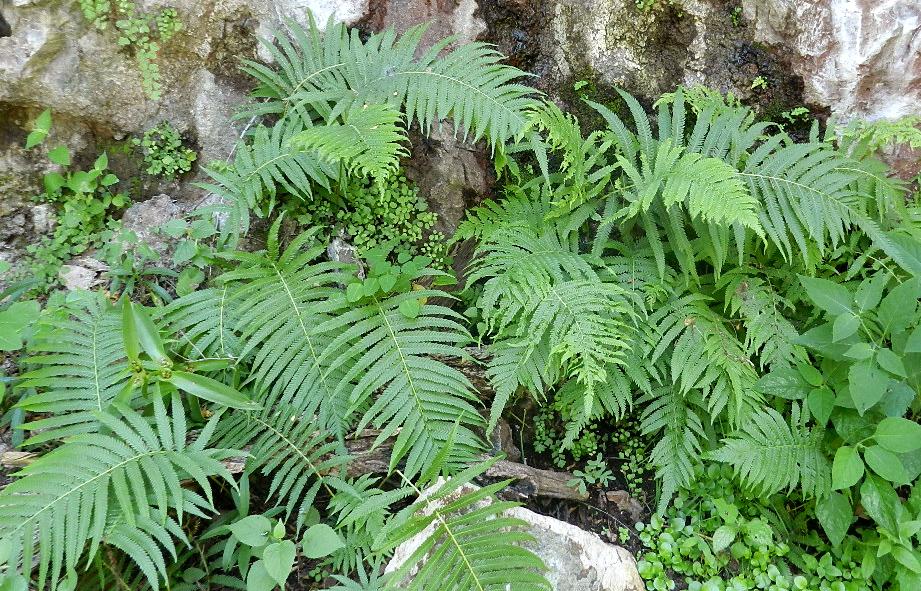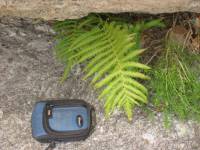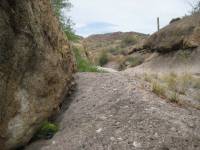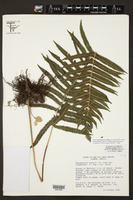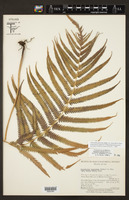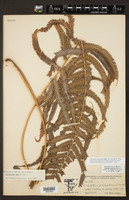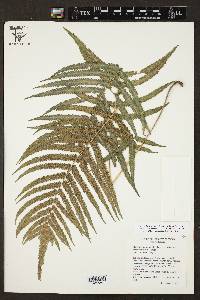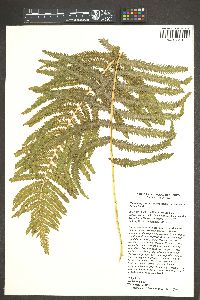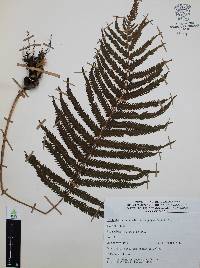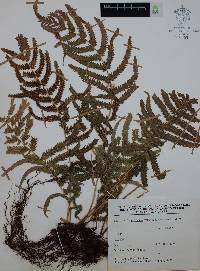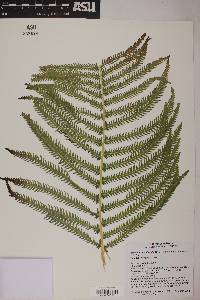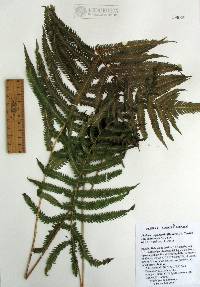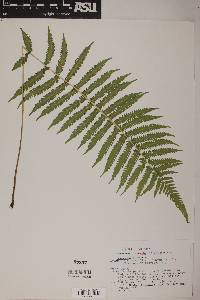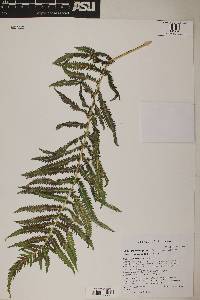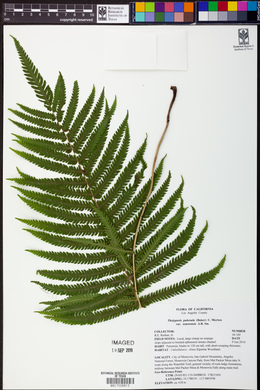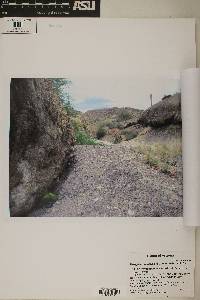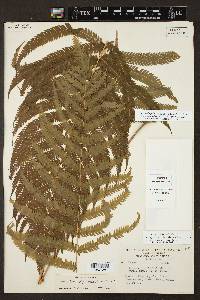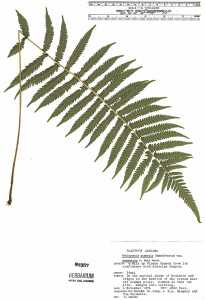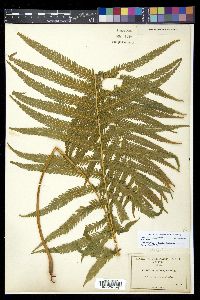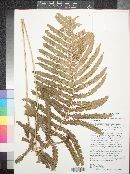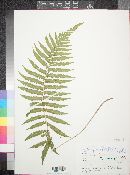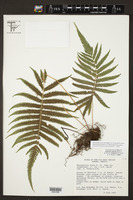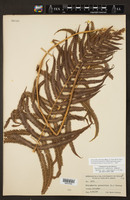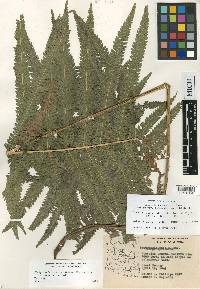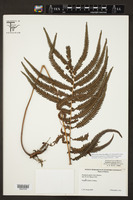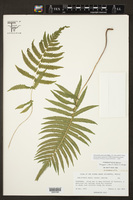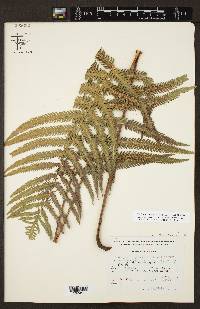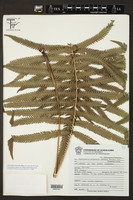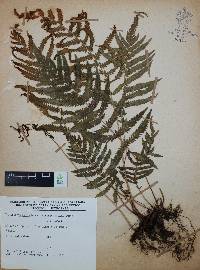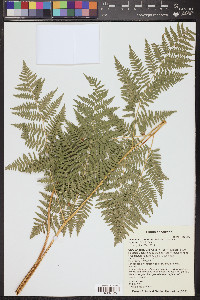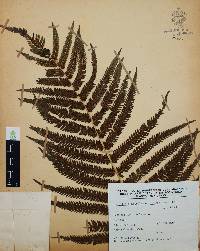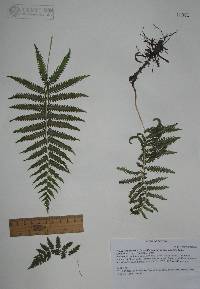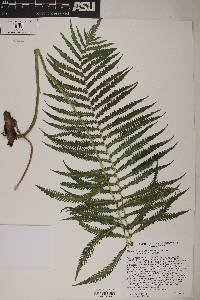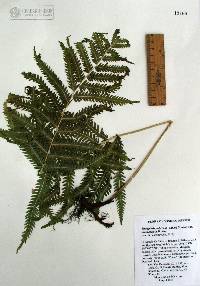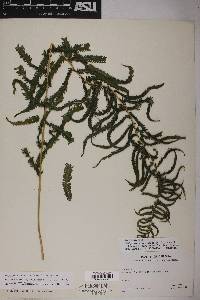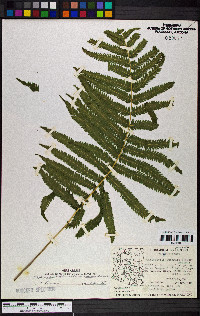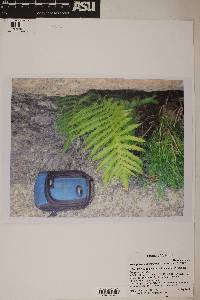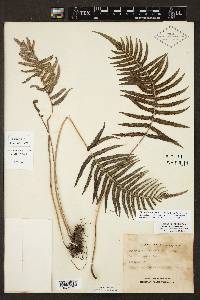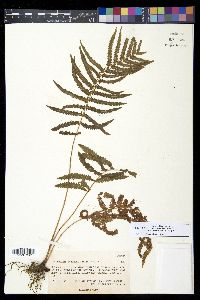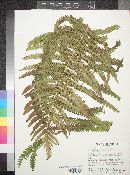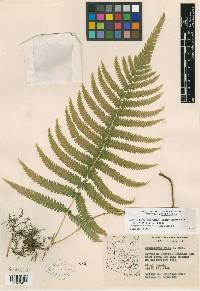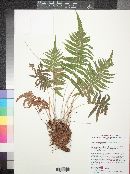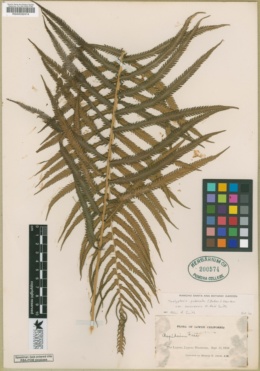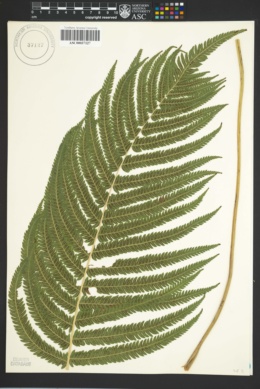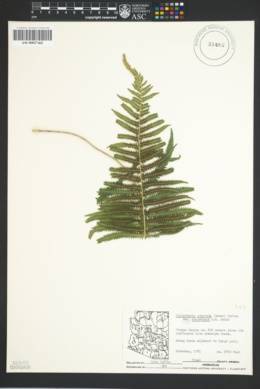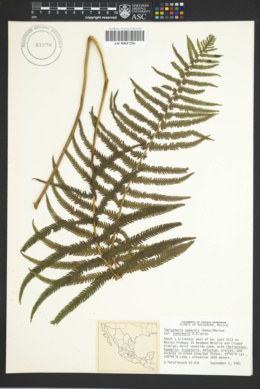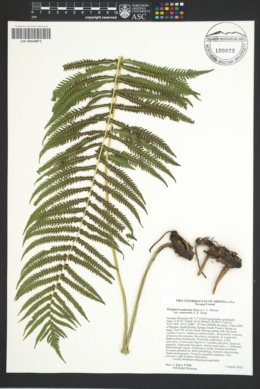Thelypteris puberula var. sonorensis
|
|
|
|
Family: Thelypteridaceae
Sonoran maiden fern
|
Stems creeping, 4--8 mm diam. Leaves monomorphic, evergreen, (0.5--)1--3 cm apart, 35--120(--165) cm. Petiole straw-colored, 15--60(--80) cm × 2--7 mm, at base sparsely set with brownish, lanceolate, hairy scales. Blade 20--55(--85) cm, broadest at or near base, gradually to somewhat abruptly tapered to pinnatifid apex. Pinnae 7--20(--26) × 1--2(--3) cm, incised 1/2--4/5 of width, proximal pinnae often narrowed toward base except for slightly enlarged acroscopic basal segment; segments oblique, somewhat curved; proximal 1--3 pairs of veins from adjacent segments connivent at sinus, or meeting margin just above sinus. Indument abaxially of often irregularly crimped hairs ca. 0.2--0.3 mm on costae, veins, and blade tissue, costae also with a few brownish scales less than 0.5 mm; blade tissue abaxially with scattered hairs ca. 0.2 mm. Sori round, medial to supramedial; indusia tan to brownish, usually densely hairy, hairs irregularly crimped, ca. 0.2 mm; sporangia glabrous. In canyons, especially along streams and seepage areas, sometimes on calcareous substrates; 100--1300 m; Ariz., Calif.; w Mexico. BLADES: hairy adaxially. NOTES: See also parent taxon for a further description Along streams and/or bases of boulders in mesic canyon bottoms: Gila, Mohave, Pima, Pinal, Yavapai cos. (Fig. 1); 800-1100 m (2700-3600 ft); CA, AZ; Mex. REFERENCES: Yatskievych, G. and M.D. Windham. Vascular Plants of Arizona: Thelypteridaceae. CANOTIA 5 (1): 49-52, 2009. General: Creeping stems, these 4-8 mm in diameter with evergreen monomorphic leaves. Leaves: Monomorphic, evergreen, 1-3 cm apart, 35-120 cm long, the petiole straw colored 15-60 cm long by 2-7 mm wide, the base set with brownish, lanceolate, hairy scales that are sparse, the pinnae 7-20 cm long and 1-2 cm wide, incised more than half the width, the final pinnae often narrowed near the base, the segments oblique, curved, the last 1-3 pairs of veins from adjacent segments meeting margin just above sinus, the indument below has irregularly crimped hairs less than 0.5 mm on costae, veins, and blade tissue, with tiny scattered hairs above. Sporangia: Sori round, medial to suprmedial, the indusia tan to brownish, with dense hairs that are irregularly crimped, the sporangia glabrous. Ecology: Found along streams and in seeps, sometimes on calcareous substrates, often in canyons from 500-4,500 ft (152-1372 m), Notes: One of the type specimens is from Aravaipa Canyon in south central Arizona. Etymology: Thelypteris is from Greek thelys for female and pteris for fern, while puberula means minutely soft downy hairs, and sonorensis means of or from Sonora, Mexico. Sources: FNA 1993, NatureServe 2012 FNA 1993, NatureServe 2012, Common Name: Sonoran maiden fern Wetland Status: OBL Rarity: G5T3 General: Creeping stems, these 4-8 mm in diameter with evergreen monomorphic leaves. Leaves: Monomorphic, evergreen, 1-3 cm apart, 35-120 cm long, the petiole straw colored 15-60 cm long by 2-7 mm wide, the base set with brownish, lanceolate, hairy scales that are sparse, the pinnae 7-20 cm long and 1-2 cm wide, incised more than half the width, the final pinnae often narrowed near the base, the segments oblique, curved, the last 1-3 pairs of veins from adjacent segments meeting margin just above sinus, the indument below has irregularly crimped hairs less than 0.5 mm on costae, veins, and blade tissue, with tiny scattered hairs above. Sporangia: Sori round, medial to suprmedial, the indusia tan to brownish, with dense hairs that are irregularly crimped, the sporangia glabrous. Ecology: Found along streams and in seeps, sometimes on calcareous substrates, often in canyons from 500-4,500 ft (152-1372 m), Notes: One of the type specimens is from Aravaipa Canyon in south central Arizona. Ethnobotany: Unknown Etymology: Thelypteris is from Greek thelys for female and pteris for fern, while puberula means minutely soft downy hairs, and sonorensis means of or from Sonora, Mexico. Synonyms: None Editor: SBuckley 2012 |

